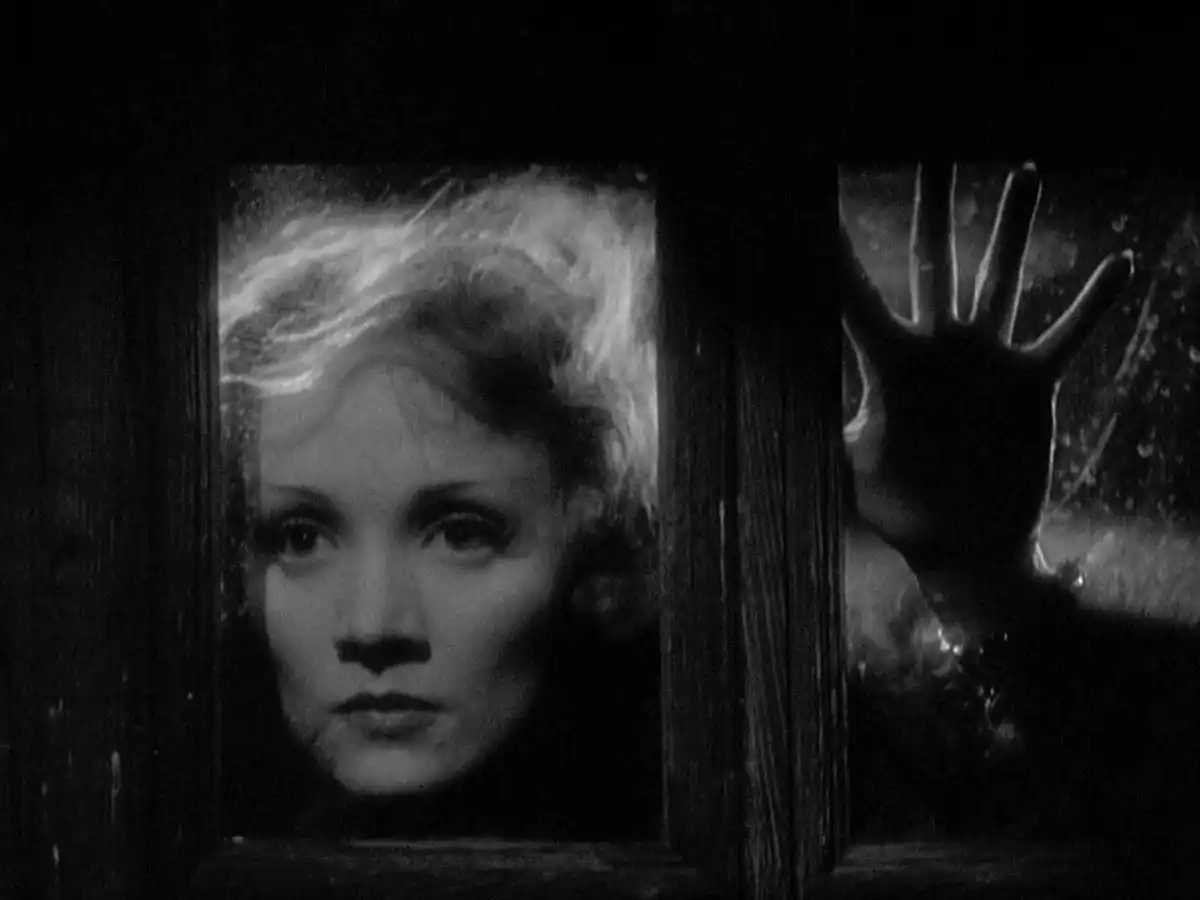“Shanghai Express” was initially released in 1932, and in its opening credits, it shows its age. The title is displayed as a man hits a large gong. Other credits are superimposed on images of lotus blossoms. The text itself resembles the font used on Chinese restaurant menus.
Then, the film proper begins. A train is about to depart from Peking, bound for Shanghai. A plethora of peculiar passengers arrives. All are deceitful in some sense. The French military officer who boards the train is just pretending to be a soldier. Mrs. Haggerty appears to be a kindly old biddy, but she is trying to sneak her beloved dog onto the train. Captain Harvey is not actually going to Shanghai for pleasure—he is performing a secret operation on the city’s governor.
Most immoral of all are the two courtesans onboard—the intrepid Hui Fei and the notorious Shanghai Lily. Captain Harvey is surprised when he discovers Shanghai Lily is actually his former lover, Madeline. When he confronts her about her dramatic transformation, she simply responds, “it took more than one man to change my name to Shanghai Lily” and notes that if she has only one regret about how things turned out. If she had to do it all over again, she wouldn’t have bobbed her hair. Yet, when Harvey is held hostage by Chinese revolutionaries, Shanghai Lily’s nonchalance disappears. Both she and Hui Fei are forced to make difficult choices in order to save his life.
In conveying this story of courtesans and crooks, von Sternberg dispenses with gongs, lotus blossoms, and other Chinese clichés. Instead, he sets “Shanghai Express” in his own imaginary domain—a domain shaped by light and shadow and dominated by Marlene Dietrich.
When the film was released, New York Times reviewer Mourdant Hall felt that it transported viewers to “the country where ‘time and life mean nothing.’” Yet, even he acknowledged that the movie was much more exciting than a real trip to China. Hall breathlessly wrote that the film includes “a killing by stabbing, men popped off by machine gun fire, the revelation as to the real identity of a few of the passengers and a romance between a woman of many casual affairs and a British Army surgeon.” The film was not a document of the Orient, but an escape from the mundane.
Von Sternberg’s form of escapism, however, differed from entertainment his peers produced. He is not really concerned with the “romance between a woman of many casual affairs and a British Army surgeon.” The real romance is between Dietrich and von Sternberg. He makes her the focus of every shot. Just as Titian floods the Virgin Mary’s face with light in the Assumption, von Sternberg’s cinematographic choices are determined by Dietrich’s actions. When she moves, all the light and shadow in the frame shifts with her. Because she controls these two essential elements of cinema, she appears divine. As her face fills the frame, she also appears unreachable. In Titian’s work, mourners try to reach up to the heavens to commune with the departed Virgin Mary. Likewise, viewers could try to identify with Dietrich’s character, a woman who gives up everything for love. Yet, they would be as unsuccessful as Titian’s figures. While clouds blocked the faithful from reaching the Virgin, viewers of “Shanghai Express” are separated from Dietrich by the silver screen itself. For von Sternberg, these images of Dietrich are altarpieces. His audience is supposed to worship her.
Von Sternberg’s compositions are worthy of comparison to the Old Masters. At one point, Shanghai Lily sits in her compartment and prays for Captain Harvey. A shaft of light enters through the window, just as a ray of sunlight filters through the window of a gambling den in Caravaggio’s “The Calling of St. Matthew.” The light illuminates Jesus’ finger in that painting, and similarly, the light calls attention to Dietrich’s hands, clasped in prayer. In another scene, Dietrich walks into a packed dining car. The studied arrangement of characters begs comparison with Pieter Brueghel’s vibrant canvases or William Hogarth’s elegant studies of aristocratic mores.
Von Sternberg’s imagination is fertile enough to create spectacles of light and shadow, to transform Dietrich from an actress to a goddess, and to allude to art history. Von Sternberg believes that the cinema itself is exotic. Here, “time and life mean nothing,” because von Sternberg’s chiaroscuro cinematography is timeless, and life is simply a means to contemplate the face of Marlene Dietrich.
Contact Amir Abou-Jaoude at amir2 ‘at’ stanford.edu.
